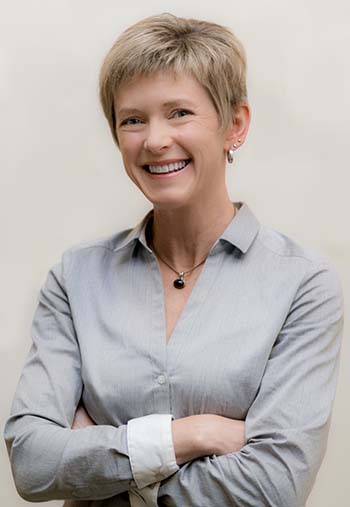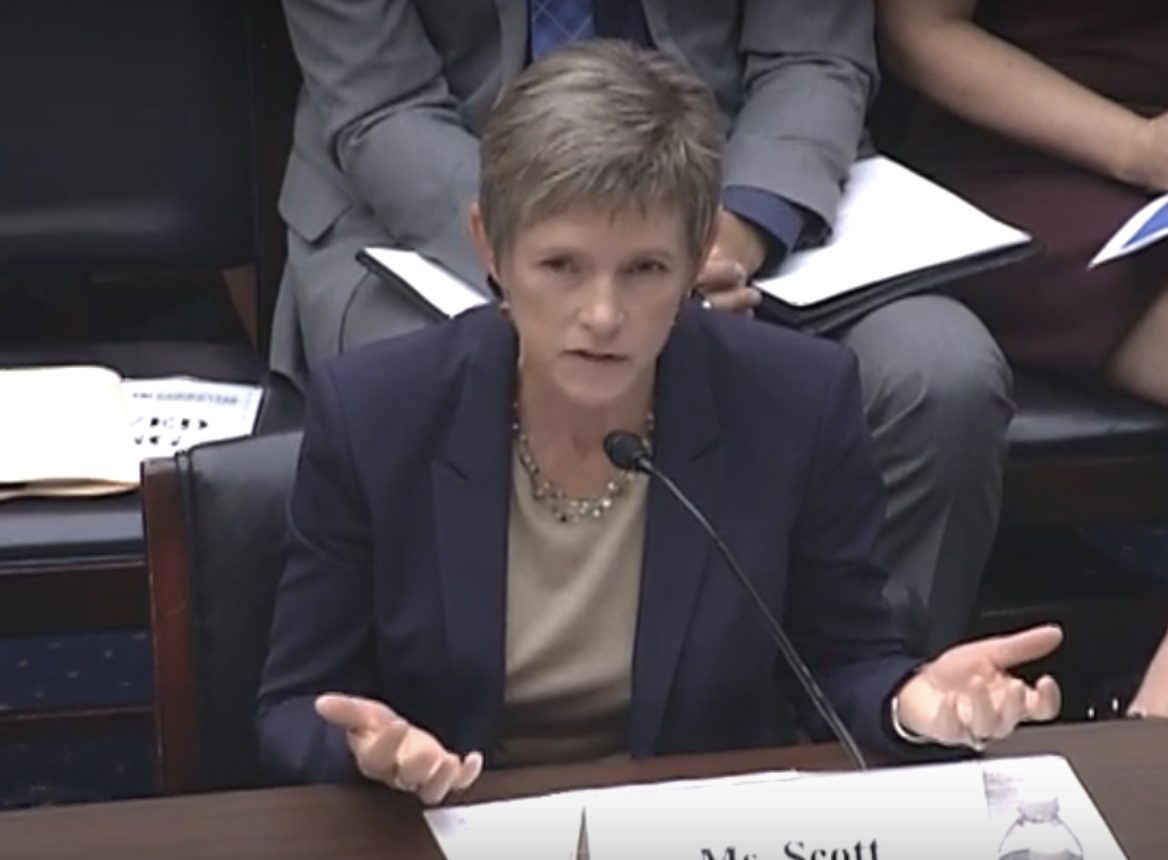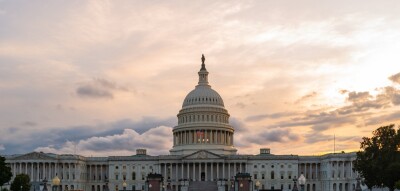Efforts to establish what it will mean to create a UAS traffic management (UTM) system for drones have been taking place for years now, as the benefits and opportunities that will be created by this kind of system are considerable. A reliable UTM system will not only be able to open up opportunities for commercial operators related to operating beyond visual line of sight (BVLOS) and flying over people but will also completely change the paradigm around urban air mobility logistics.
Understanding the opportunities as well as the challenges that are associated with enabling this kind of system was the primary focus of a
recent hearing of the House of Representatives Subcommittee on Aviation, as lawmakers wanted to understand how they should be approaching the safe and efficient integration of new users into the National Airspace System. Mariah Scott, President at
Skyward, A Verizon company, was one of the five people who testified in front of the committee. Her explanation around why UTM should be thought of as a system of systems, which will see the term come to mean a “Universal Traffic Management”, was especially prescient. She explained this transition would facilitate an environment that enables safe sharing of the airspace for aircraft that range from commercial airliners to package delivery drones to aerial taxis,
The importance of this transition for the industry as a whole when it comes to remote identification, flying beyond line of sight and remote networked fleet deployments is something you can see for yourself when
watching Mariah’s testimony or reading through
her written testimony. They’re insights that we discussed further with Mariah in the exclusive interview below, and they’ll be further defined at her
UTM/LAANC session as well as at the
Skyward booth during Commercial UAV Expo.
Jeremiah Karpowicz: Your written testimony referenced your experience guiding new technology to market in highly regulated environments. How has that experience influenced the approach you’re taking to integrating drones into the NAS?
Mariah Scott
: We have a unique opportunity to learn from other regulated markets and technology. We know that systems that work have global standards and regulatory frameworks that promote interoperability and rapid adoption. I’ve worked in online transactions, which follow global, interoperable, trusted standards, and healthcare IT, which does not. With drones, we have the opportunity to get it right in the beginning-- working with regulators and industry-- to establish a faster path to adoption and an even playing field for all businesses.
Chairman Frank LoBiondo's (R-NJ) opening statement mentioned that his committee has met several times to discuss the opportunities and challenges that come with drones. Do you have a sense of whether or not the committee’s thoughts or position around drone technology has changed since they first met?We’ve been working closely with Congress and with the FAA’s working groups (LAANC, Drone Advisory Council and Remote ID Aviation Rule Committee) to educate government stakeholders on the technology and business opportunity with drones. We’ve appreciated Chairman LoBiondo’s support of the drone industry from the start and believe the committee is working hard both to ensure safe integration of drones in the national airspace and to encourage commercial applications of drones.
Sometimes I worry that certain industry and regulatory stakeholders are focused too much on the “flying car” future of the technology at the expense of where and how the drones can make sense in a safe and legal way today. At the same time, it’s important to consider where things are going with the technology in the long run. How do you balance out the needs of the present with potential opportunities for the technology in the future? We saw in the hearing that many of us are still kids at heart and excited about a Jetson’s future. To me, “flying cars” are just another type of aircraft-- some will be piloted, and some will be autonomous, but they will all need to safely operate in the national airspace, and share the air with everyone else. It's important to have this vision as we build the initial systems for Universal Traffic Management – starting with LAANC for commercial operations today.
At Skyward, we’re helping our enterprise customers build safe, efficient drone programs, and giving them access to fly in more ways and more places. We’re also designing the systems that will bring connected drones over LTE and Beyond Visual Line of Sight (BVLOS) flights into reality through our R&D division, Project Horizon.
Continued public/private partnerships are one of the three things you mentioned in terms of enabling the value drones can provide, and both the IPP as well as LAANC are great examples of those kinds of partnerships. Do you think the industry needs to focus on enabling entirely new public/private partnerships for the future, or instead build on what’s already been established with the IPP and LAANC?We think there is room for new public/private partnerships, in particular driving common regulatory frameworks paired with interoperable technical standards. It is also critical to continue investment and support for the programs that are working, like LAANC and IPP. From our view, LAANC has been hugely successful and a game changer for the industry. We’re seeing great work out of IPP already and we are working with the FAA to define the next steps for LAANC. We must continue to build and develop systems and standards by collaborating with all stakeholders. Our work in groups like the Small UAV Coalition, Global UTM Association (GUTMA), the AUVSI Advocacy Committee, CTIA, 3GPP, and GSMA is important in that standardized development.
You also mentioned that you see regulatory innovation and freedom to compete as necessities when it comes to opening up the value drones can create, and much of that comes down to establishing a remote identification rule that applies to all vehicles in the air. That lines up with the position FAA Administrator Dan Elwell has laid out, but what are the biggest challenges associated with the creation of this kind of rule? Are they more about technology, policy, privacy, or something else? Each of those challenges is interrelated, but the biggest challenge appears to be a political one. Balancing the interests of the various stakeholders for a satisfactory remote ID policy has proved difficult. The technology is here, and there are reasonable solutions to questions of privacy, authentication and applicability of a remote ID rule, and the FAA knows that after the remote ID ARC last year. We are finally seeing alignment from Congress around the need to apply a remote ID standard to all remote pilots in the national airspace, and I was encouraged by the strong support from everyone who testified during the hearing. As we know, it will take Congressional action, perhaps in the FAA Reauthorization, to provide the mandate to the FAA with regard to Remote ID, but this is a key milestone in accelerating industry growth. We trust that the FAA will implement a performance-based standard that will lead to further airspace access for our customers.
Is the creation of a remote ID rule related to the evolution of UTM from “UAS Traffic Management” to “Universal Traffic Management”? What does that evolution mean to both regulators and the drone industry as a whole?I think the applying a remote ID rule to all UAS operating in the national airspace is a fundamental building block to traffic management systems. We can’t manage the airspace if we don’t know who is operating in it. The evolution to Universal Traffic Management is an extension of the “system of systems” thinking that NASA, GUTMA and others have promoted in describing UAS Traffic Management. Since all of these aircraft-- manned, unmanned, hybrid-- share the same airspace, the traffic management systems that allow safe access and deconfliction should be universal-- which doesn’t mean one monolithic system, but rather a comprehensive distributed network. If we’re going to see continued innovation and autonomous vehicles then manned and unmanned aircraft need to be able to deconflict in airspace and be identified by the proper authorities. For the drone industry, this means we need to continue to collaborate with companies like Joby Aviation and Uber Elevate who both joined me at the hearing. Bringing all interests to the table as we create these standards will enable those hybrid class of aircraft -- clearly not the same as a DJI system, but not quite a Sikorsky either -- to seamlessly integrate into the same airspace.
What would you say to hobbyists or others that feel remote identification rules shouldn’t apply to them because they’re interacting with the airspace in an inherently different way than someone using it to, for example, deliver a package or perform an inspection? We see remote ID for all drones as equivalent to license plates on vehicles. Whether I’m driving my car for work or personal use, I still need a license plate. And if I’m driving a large commercial truck, there is a different set of training requirements I need. We all need to be accountable in the airspace, and even the most fervent hobbyists agree that safety of the airspace is paramount and that a reasonable remote ID rule will further that safety goal.
How important is it for people to realize that your efforts in this area are ultimately not about the FAA declaring a single UTM provider “winner”? Is that the biggest misconception you sort through when it comes to how certain people think of your advocacy and efforts in this area? This is a great point and something that is really important to stress. We believe that the industry and regulators are best served by a Universal Traffic Management that is more like a network, or a federated interoperable system, because those systems are more efficient to scale, more resilient, and safer. Just as the internet isn’t owned by a single entity and there is no “winner” in its creation - UTM will open the market for more businesses to scale in this space if it is based on standardized protocols and systems that allow for multiple providers to manage safe integration of all vehicles into the national airspace.
I imagine many of these insights are ones you’ll directly and indirectly elaborate on during your UTM/LAANC session and at the Skyward booth at the Commercial UAV Expo. What kind of takeaways and/or action items are you hoping to provide for attendees of the event?I look forward to these events every year because it’s my chance to get the most facetime with our customers. As I mentioned, today Skyward is laser focused on delivering value to our enterprise and business customers through fast access to controlled airspace and drone operations management solutions. Talking to companies growing their drone fleets is the best way to get the direct feedback I need to guide our teams in the right direction. More than giving action items, I’m hoping to listen, learn and take back action items for my team that represent the most pressing needs of commercial drone programs.
To hear more from Mariah, make sure you attend her UTM/LAANC session and stop by the Skyward booth (#312) at the Commercial UAV Expo, happening October 1-3 in Las Vegas. 
















Comments